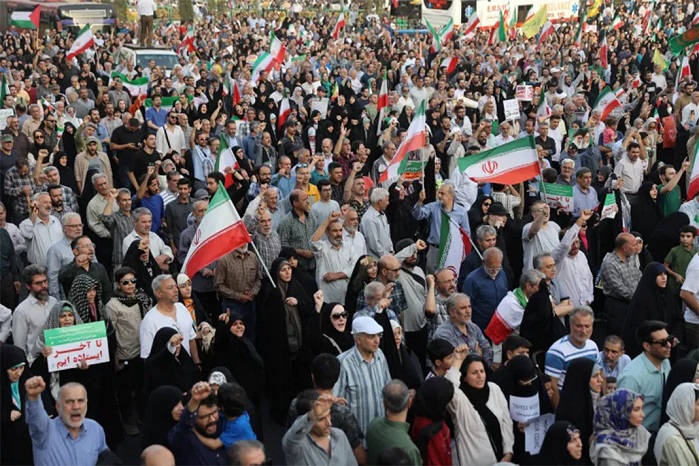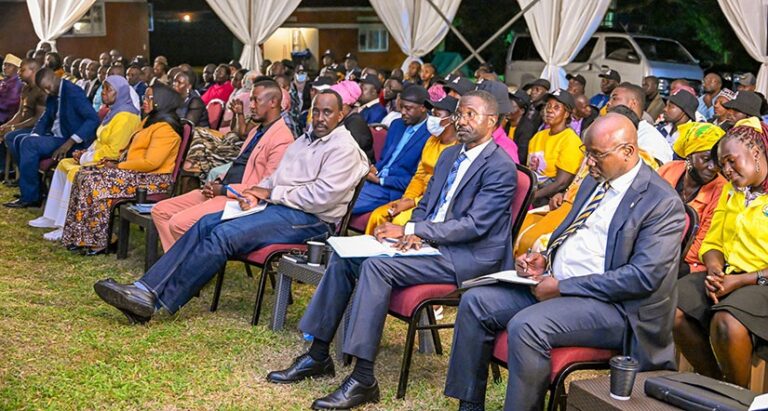
Iranian masses hit the streets to celebrate the “victory” against Israel after the Trump brokered ceasefire seemed to hold
HABARI DAILY I Kampala, Uganda I Even after a Donald Trump brokered cease fire, the Iranians could not Suppress the trigger.
Slightly two hours after the ceasefire was supposed to have started, at 05:00 GMT, Israel said it intercepted at least two missiles coming from Iran heading for the north of the country.
Although they denied having launched the two missiles, high ranking military officials in Tehran were of the view that they were on top of the game and couldn’t help but launch a few more lethal missiles at their arch enemy.
They were basking in the glory of the knowledge that even after hitting the biggest US military base in the Middle East, located in Qatar, they didn’t receive any definitive retaliation from Trump.
350 missiles fired
According to estimates published by the Israeli media, and attributed to the Israeli Defense Forces (IDF), Iran fired roughly 350 missiles in response since Israel launched its military offensive against Tehran. This, they said, was a far cry from the 1,000 Tehran had reportedly planned to throw at Israel.
Before Israel launched its offensive, Iran’s long range missile arsenal was considered one of the most lethal in the Middle East.
Estimates put the number of Iranian missiles at 3,000 or so before the war, meaning that the country had the largest stockpile in the Middle East, say analysts.
They however pointed out that not all of Iran’s missiles have the capacity to reach Israel, which is more than 1,000km from Iran.
One tactic Iran used was to deploy both drones and missiles in tandem to increase their effects.

Iranians display pictures of their leaders Israel had vowed to kill but failed
Among the missiles that struck Tel Aviv were said to be the most modern versions of Iranian hypersonic missiles. These include the “Fattah” models, which are among the fastest, as well as weapons that Tehran had apparently never used before.
Iran has claimed that they fired two relatively recent models – the Haj Qassem and Qassem Bashir missiles – that are capable of defeating the world’s best air defense systems, including Israeli missile shields and the US-made Patriot system.
The former was developed in 2021 and named in honour of Qassem Soleimani, the former commander of the Revolutionary Guards’ elite Al-Quds Force who was assassinated in a 2020 US drone strike. The Qassem Bashir was unveiled in May.
Human toll
During the Iran–Israel war, by 22 June 2025, Human Rights Activists in Iran (HRANA), a US-based organization, reported that over 800 people have been killed and over three thousand wounded by Israeli strikes on Iran.
The Iranian health ministry stated that more than 2,500 people have been wounded. On 16 June, the death toll in Israel was reported to be eight, with approximately 100 individuals injured.
On the same day, CNN reported casualties in Israel of 24 people killed and 592 wounded, with 10 of them in serious condition.
According to the Iranian health ministry, more than 2,500 people have been wounded, and that, as of 22 June 2025, 865 had been killed, including 215 military members, 363 civilians and 287 unidentified dead. 3,396 people were injured.
Regional sources said that at least 20 senior commanders were killed in the strikes.Confirmed casualties include Iranian Armed Forces Chief of Staff, Major General Mohammad Bagheri, Islamic Revolutionary Guard Corps (IRGC) commander Hossein Salami, IRGC senior commander Gholam Ali Rashid, and IRGC commander Amir Ali Hajizadeh.




